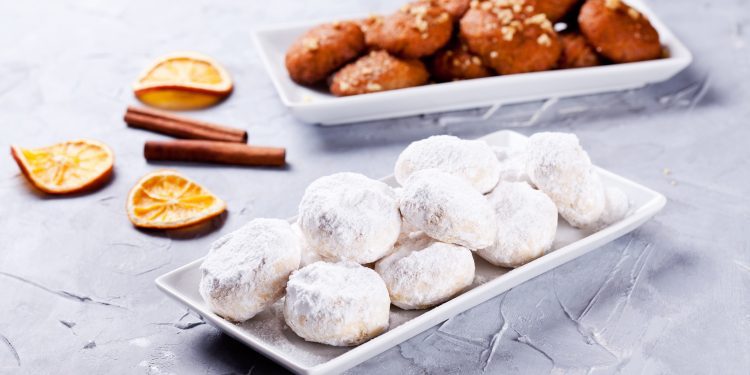Greek desserts are more than just a delightful end to a meal; they reflect the country’s rich history, culture, and Mediterranean flavors. From pastries soaked in honey to creamy custards, these sweets offer a glimpse into Greece’s culinary traditions that have been passed down for centuries.
1. The Classic Baklava
When thinking of Greek desserts, baklava is often the first to come to mind. This iconic pastry is made with layers of flaky phyllo dough, filled with chopped nuts—typically walnuts or pistachios—and soaked in a syrup made from honey and spices. Baklava’s roots extend to ancient Greece, and over the years, it has become a symbol of Greek hospitality. You’ll often find it served during special occasions and celebrations.
What makes baklava special is the careful layering of dough and nuts, combined with the richness of the syrup. Every bite provides a perfect balance of sweetness, crunch, and subtle spice.
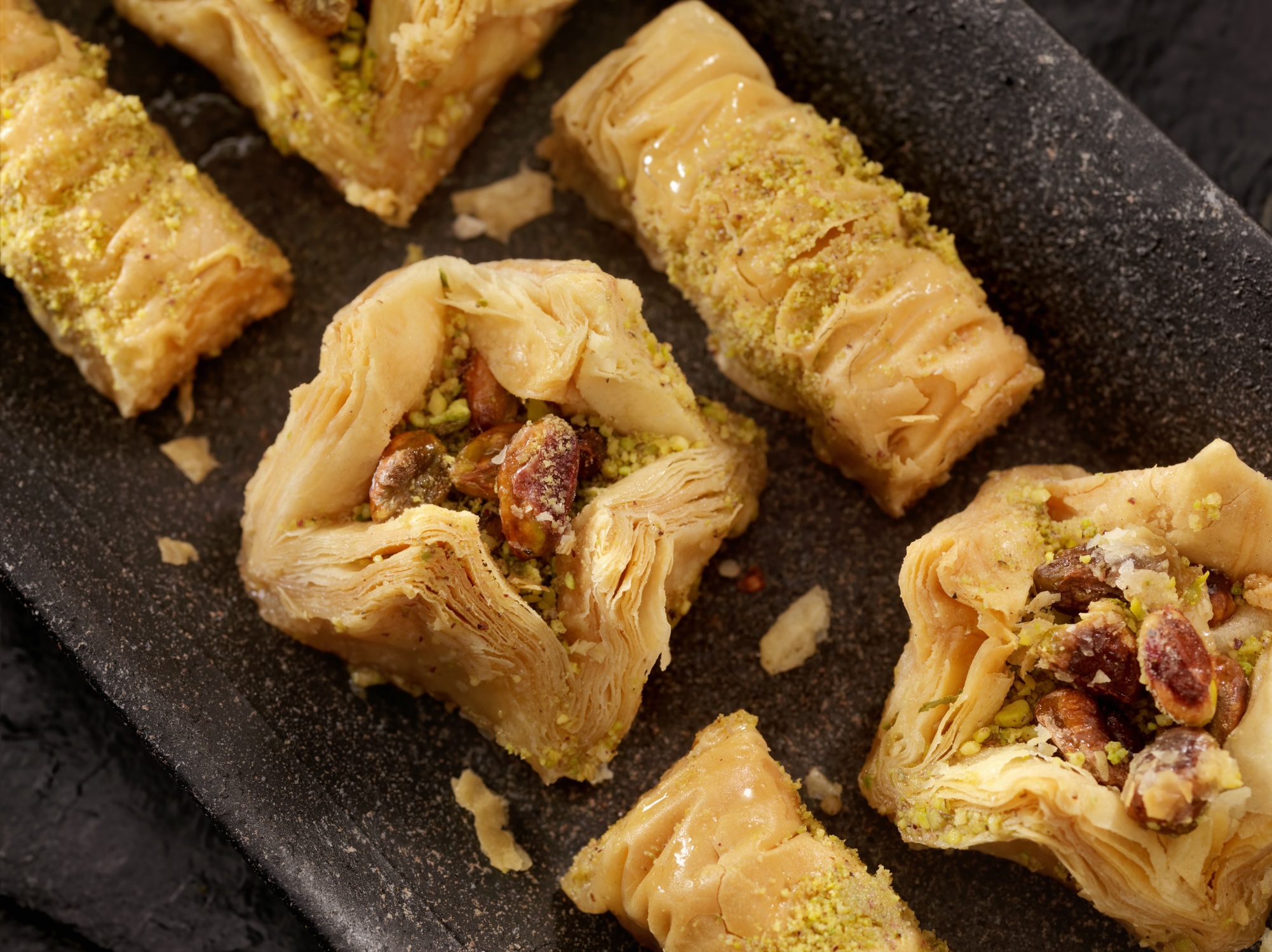
2. Loukoumades: Greece’s Sweet Donuts
Loukoumades are small, deep-fried dough balls, crispy on the outside and fluffy on the inside, traditionally drizzled with honey and sprinkled with cinnamon. These golden, bite-sized treats date back to ancient Greece, where they were served as prizes for victorious athletes during the Olympic Games.
Today, loukoumades are enjoyed by people of all ages, often served warm with a variety of toppings such as crushed nuts, chocolate sauce, or even ice cream. They are commonly sold at Greek festivals, fairs, and markets, offering a delightful, sweet snack perfect for any time of the day.
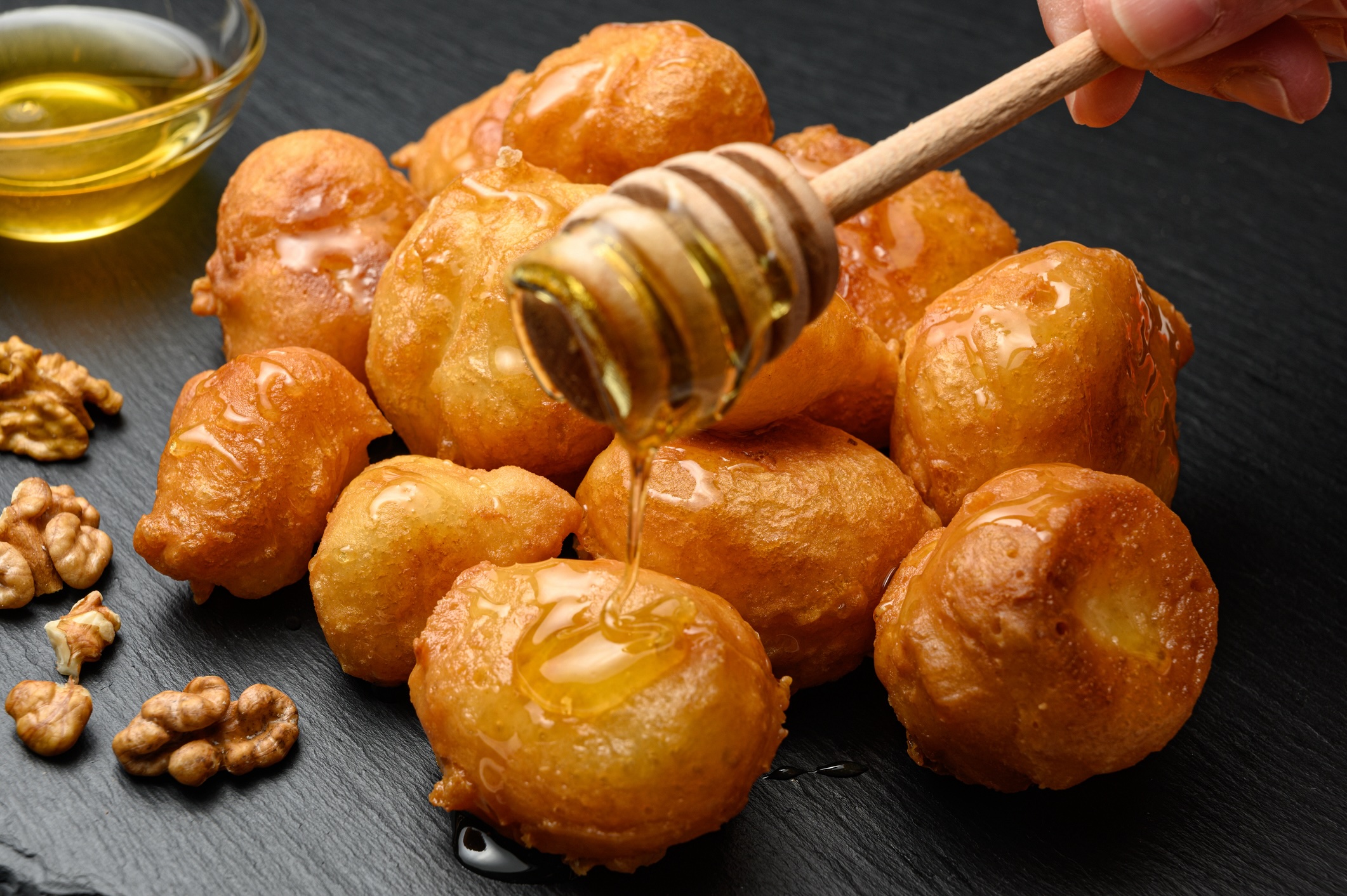
3. Galaktoboureko: The Custard Delight
If you’re a fan of creamy desserts, galaktoboureko is a must-try. This decadent dessert is made with a smooth semolina-based custard, enveloped in layers of crisp phyllo dough, and drenched in a light lemon or orange-infused syrup. The contrast between the rich custard filling and the crisp, syrup-soaked dough makes galaktoboureko one of Greece’s most beloved sweets.
What sets galaktoboureko apart is its preparation. Unlike many Greek desserts, where the syrup is added after baking, the syrup in galaktoboureko is poured over the dessert while it’s hot, allowing it to absorb the sweet liquid and create an irresistible texture.
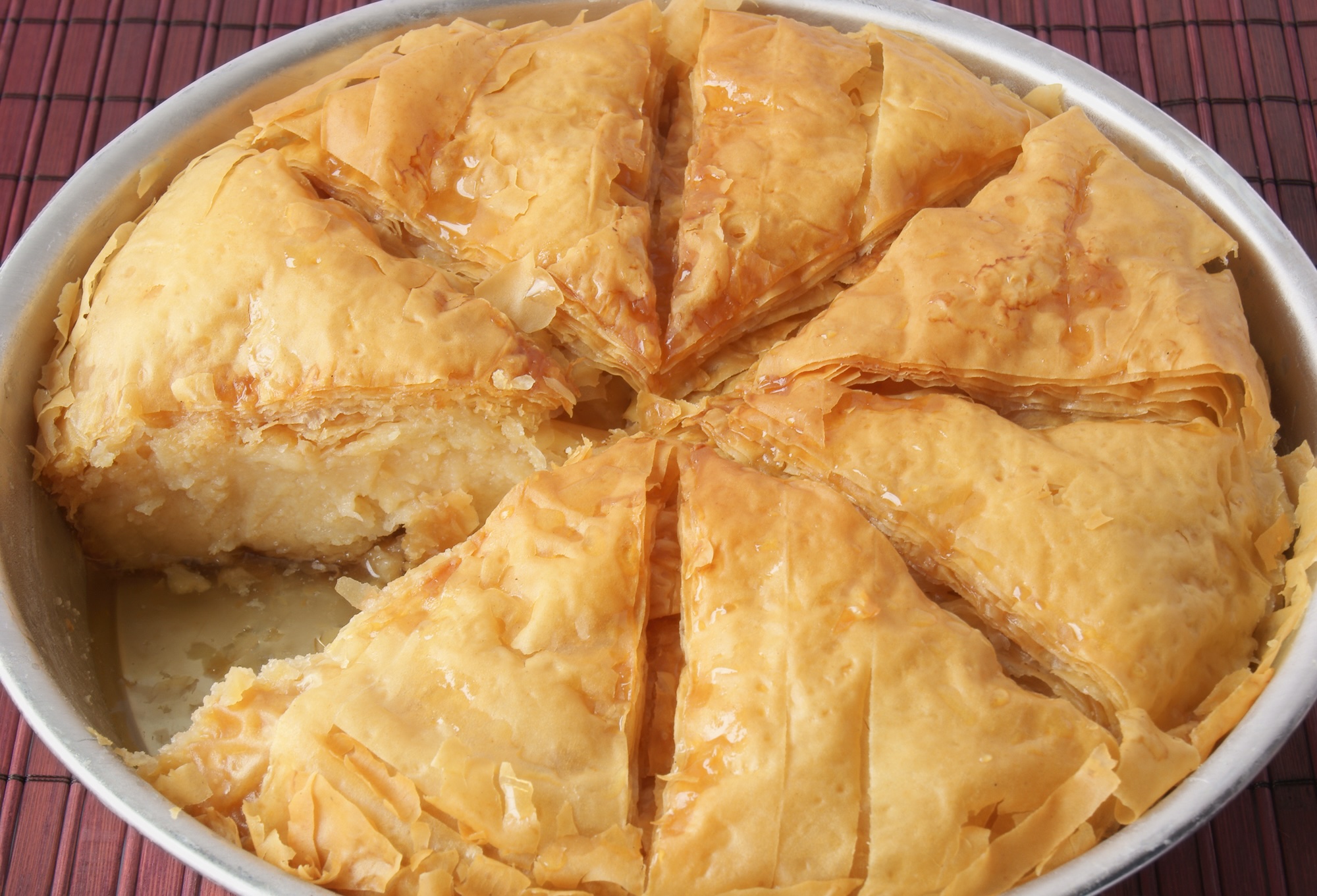
4. Koulourakia: Easter’s Sweet Biscuits
Koulourakia are traditional Greek butter cookies, typically made during Easter. These lightly sweetened, twisted biscuits are often flavored with vanilla, orange zest, or mahlep (an aromatic spice made from the seeds of the St. Lucie cherry). Koulourakia are baked until golden and are usually served with coffee or tea.
Though they may seem simple, the shaping of koulourakia—whether braided, twisted, or shaped into rings—makes them unique. During Easter celebrations, families often bake large batches of these cookies to share with friends and relatives, keeping the tradition alive through generations.
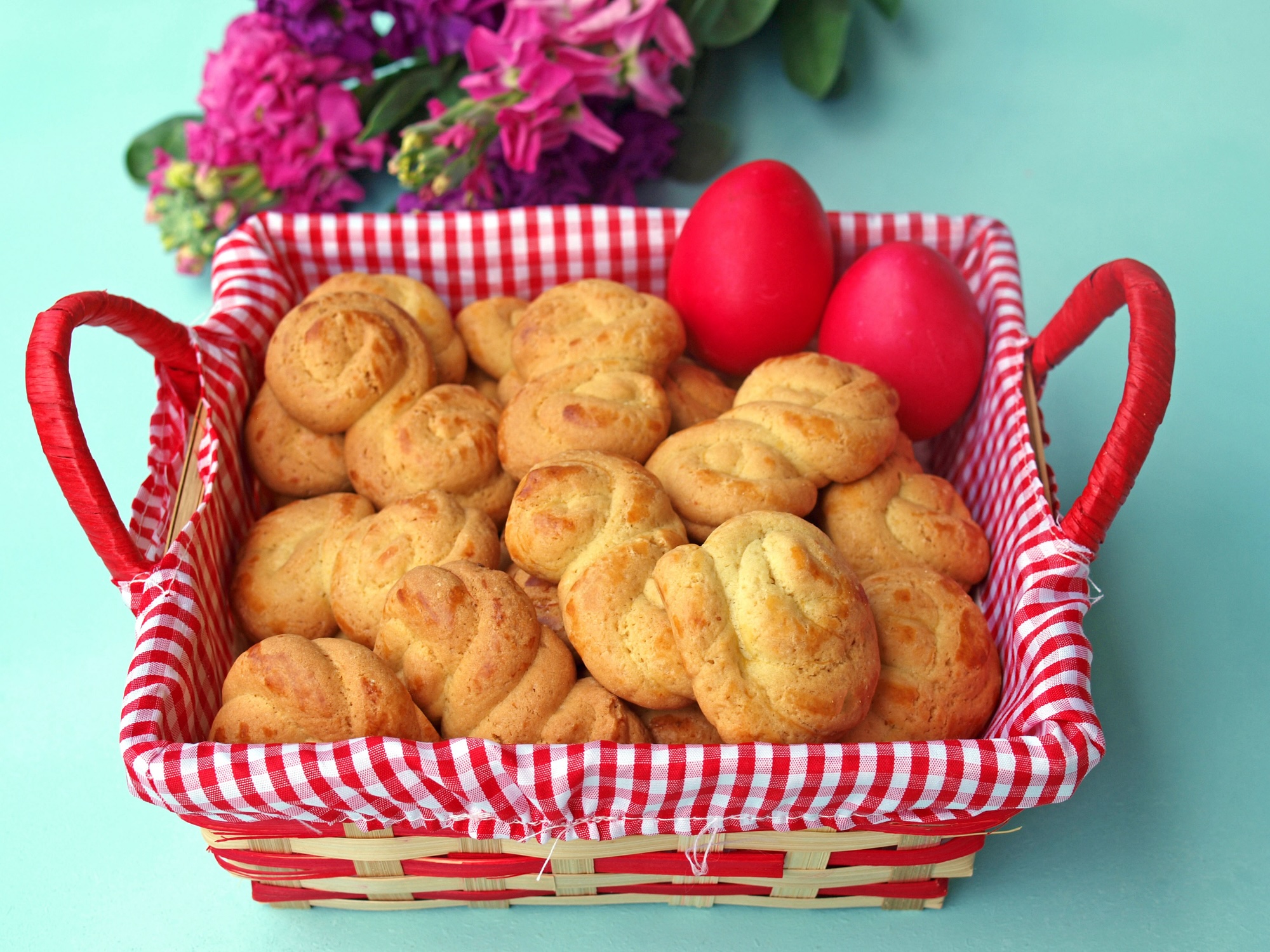
5. Melomakarona: A Holiday Favorite
During the Christmas season, melomakarona are a staple in every Greek household. These spiced cookies, made with olive oil, orange juice, and flour, are soaked in honey syrup after baking and topped with crushed walnuts. Their distinct flavor comes from a blend of cinnamon, cloves, and orange zest, creating a warm, festive treat that pairs perfectly with a cup of coffee or tea.
Melomakarona are typically made in large quantities during the holidays, with families gathering to bake trays upon trays of these golden, syrupy delights to share and gift to loved ones.
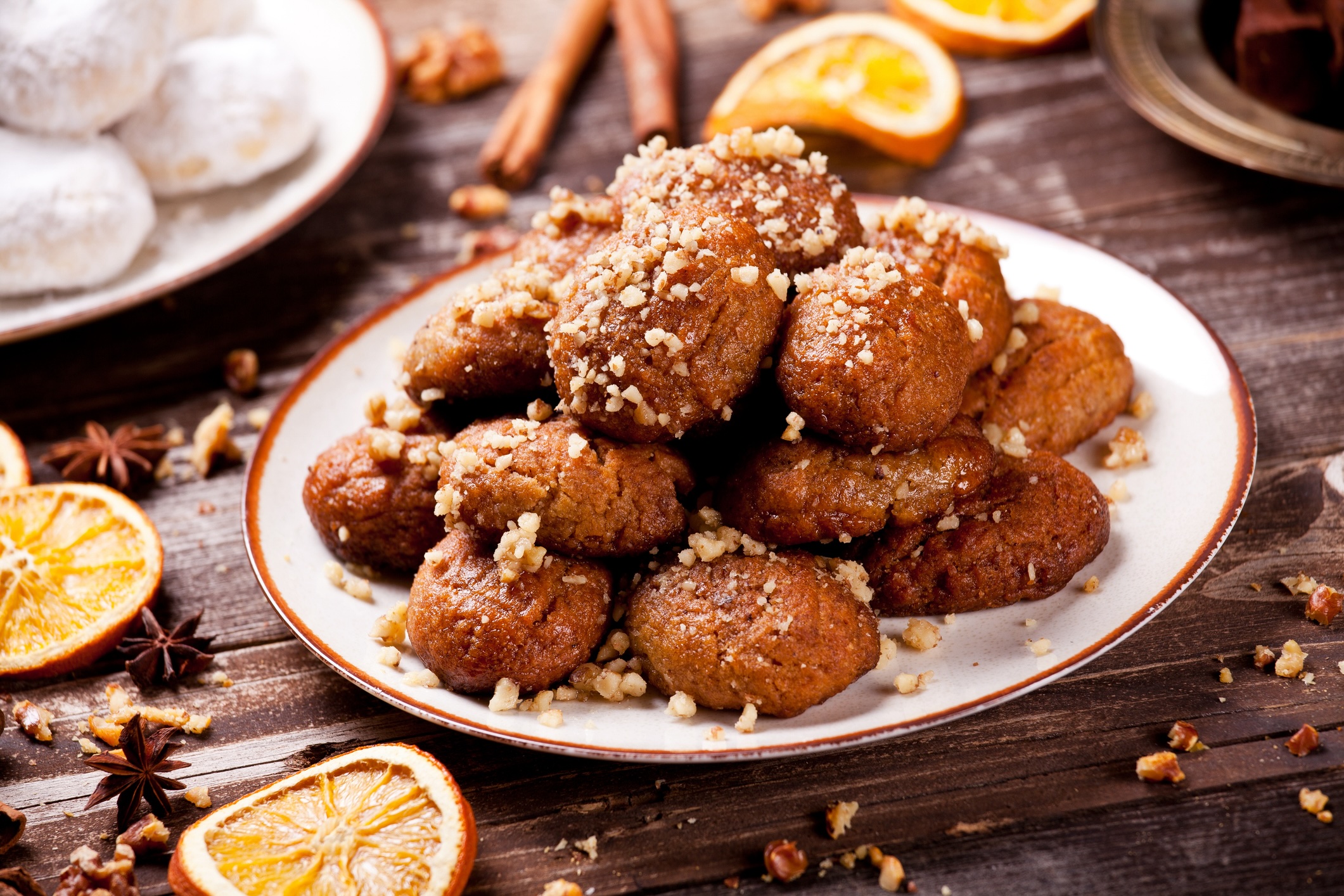
6. Bougatsa: A Breakfast Staple
Bougatsa is a delicious pastry commonly enjoyed for breakfast in northern Greece, especially in Thessaloniki. Made with layers of flaky phyllo dough, bougatsa is typically filled with either sweet semolina custard or savory fillings like cheese or minced meat.
When served as a dessert, sweet bougatsa is dusted with powdered sugar and cinnamon, offering a warm, comforting start to the day. The crispiness of the phyllo combined with the creamy custard filling makes bougatsa an irresistible choice for those with a sweet tooth.
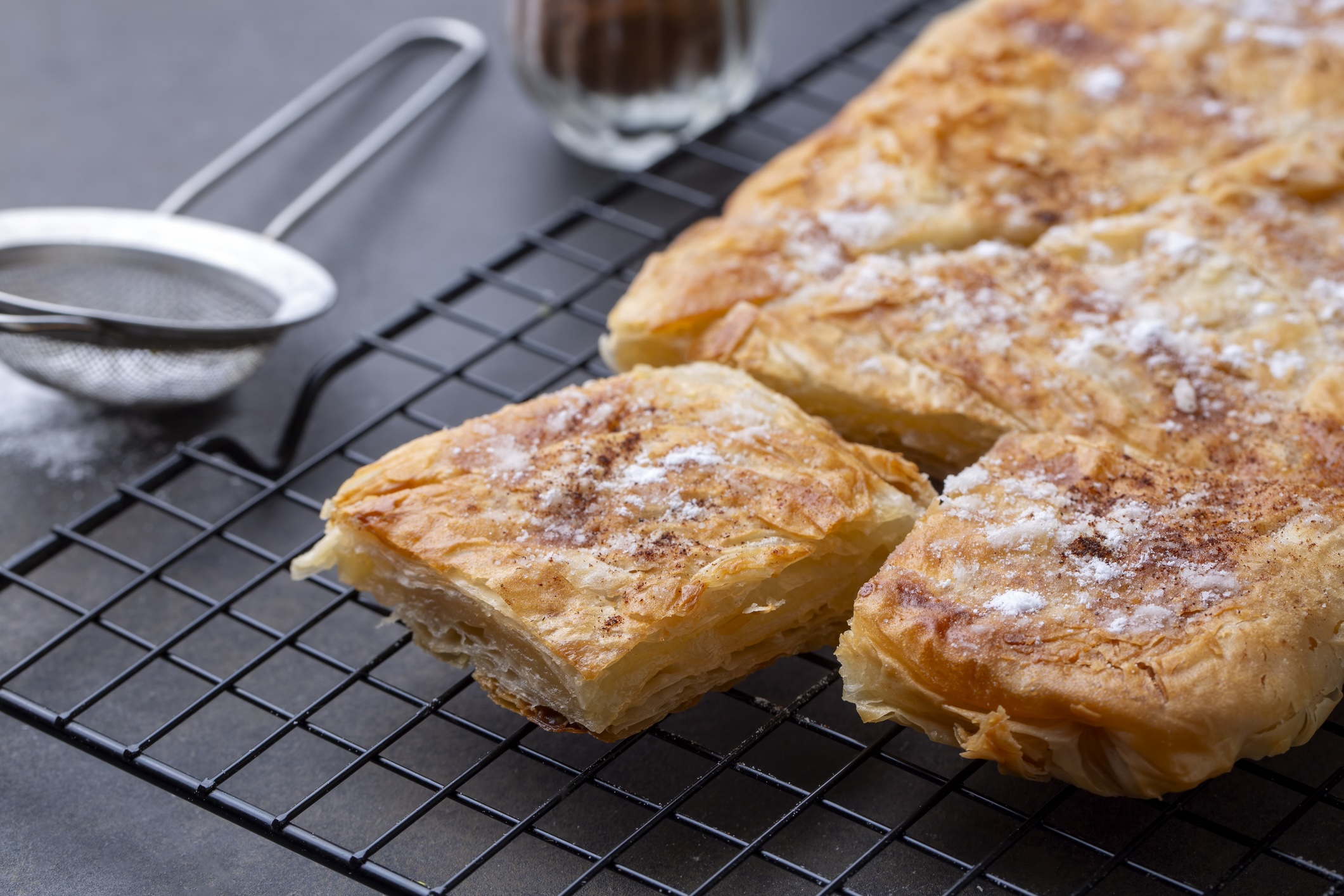
7. Revani: A Syrupy Semolina Cake
Revani is a light and fluffy semolina cake soaked in syrup, often flavored with lemon or orange. Its roots can be traced to both Greek and Turkish cuisines, making it a popular dessert across many regions. Revani’s simple ingredients—semolina, sugar, eggs, and yogurt—create a dense yet moist cake that absorbs the sweet syrup perfectly.
The cake is typically served in squares and garnished with grated coconut or almonds, making it both a visually appealing and delicious treat. Revani is a popular dessert at family gatherings and celebrations, symbolizing the sweetness of life.
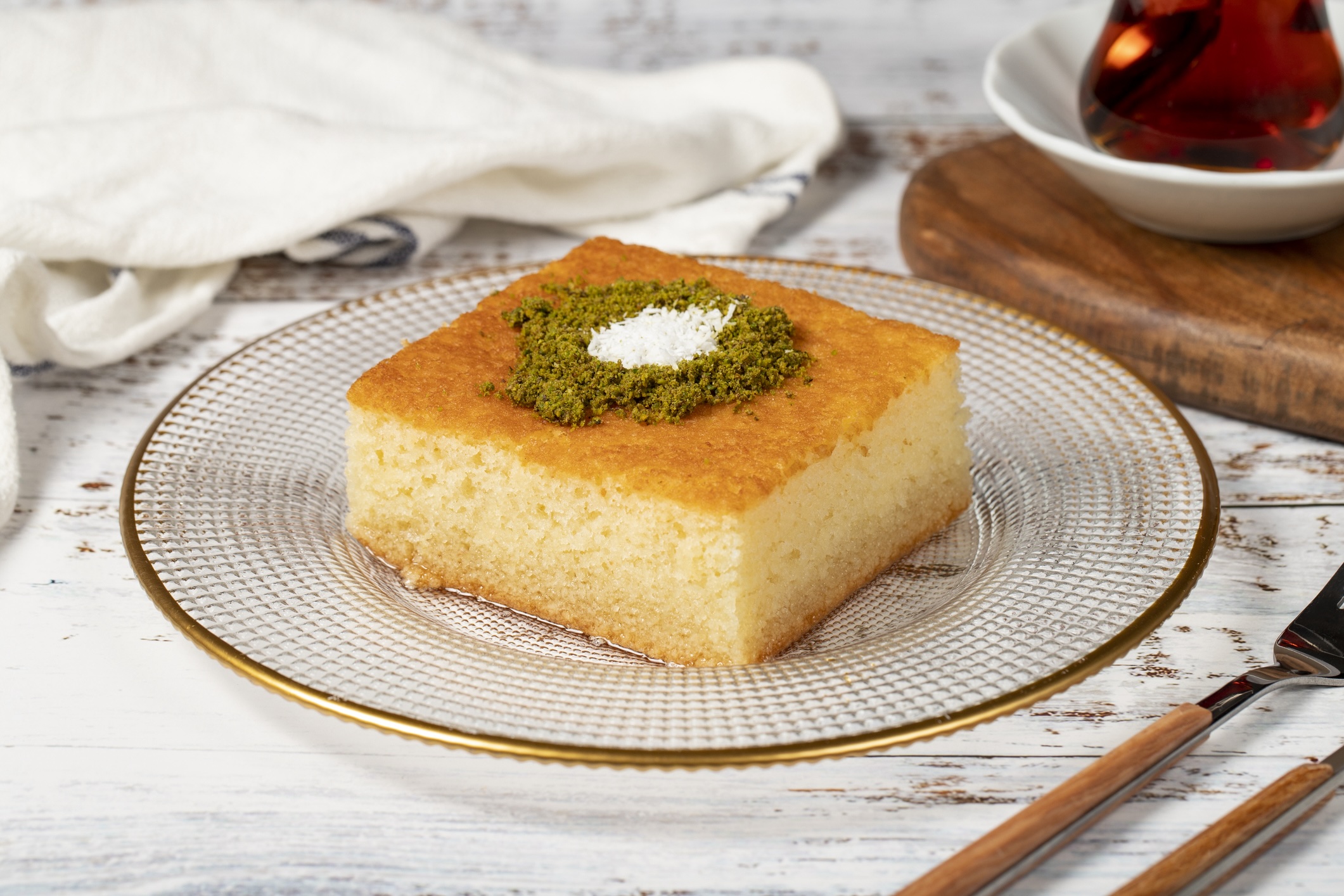
Conclusion: A Sweet Journey Through Greek Culture
Greek desserts are more than just sweet treats—they are a reflection of the country’s deep-rooted traditions, history, and communal celebrations. Whether you’re indulging in the crispy layers of baklava, enjoying the simple pleasures of koulourakia, or savoring the rich creaminess of galaktoboureko, each dessert offers a taste of Greece’s culinary heritage. As you explore these desserts, you’ll find that Greek sweets are not just a part of the meal but a part of the experience, shared with loved ones and enjoyed at life’s most joyous moments.

